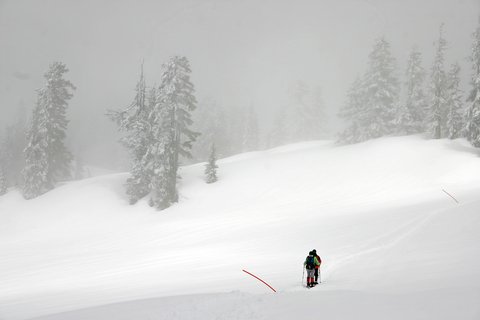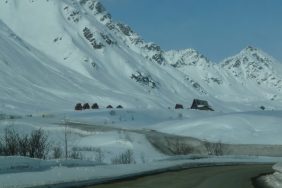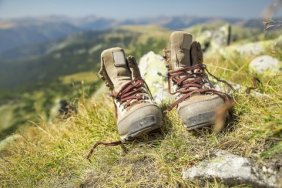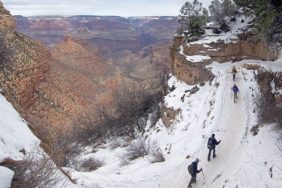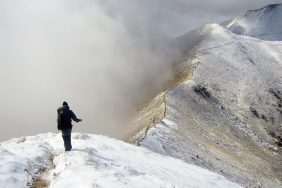Winter is one of my favorite seasons to go hiking. The trails are quieter, less crowded, and winter landscapes make for great photo opportunities.
As enjoyable as winter hiking is there are a few inherent health risks that come along with it. Being aware of these common backcountry winter hiking risks and how to protect yourself from succumbing to them can be a lifesaving piece of knowledge.
Hypothermia
Perhaps the most well-known winter risk, hypothermia sets in when the body’s temperature decreases due to exposure to the cold, and it can be life threatening. Furthermore, you can become hypothermic without even realizing it. Symptoms include shivering, slurred speech, inability to communicate clearly, and becoming lethargic.
If you or a hiking buddy notice any of these, rest for a bit and warm up with thick, dry clothing, warm food and drinks, buddy up in a sleeping bag or contact medical help. The best way to prevent hypothermia is to stay warm, stay dry, stay hydrated and make sure to eat plenty of the right foods.
Bonus Tip: If I’m heading out for a longer trek in the winter, I’ll take a vacuum bottle—a Hydro Flask bottle is a good option—with a hot drink or soup.
Frostbite
Very common in winter activities, frostbite is a freezing of your skin tissue, usually on the fingers, toes, nose or face. It happens when heat is being lost faster than the blood can circulate and in some cases requires amputation. Yikes. Pay attention to any numbness in these areas, loss of sensitivity, a burning tingling, shivering or if your skin turns from red to white to purple.
If symptoms appear, place the frostbitten skin against warm skin (armpits are a safe bet) and get warm water on the skin. Don’t rub it or use fire to warm yourself; these can make it worse. The best way to protect yourself against frostbite is to pay attention to your body and stay warm and dry during winter hikes. Also, it doesn’t hurt to keep hand and feet warmers nearby.
Dehydration
You can still get dehydrated in cold weather, so drink plenty of water during those winter hikes. Don’t just drink when you’re thirsty, either; schedule drink breaks along the trail to stay hydrated.
One way I keep an eye on my hydration is to pay attention to my urine. Dark urine means you’re dehydrated. You can also keep an eye out for increased heart rate, dry mouth, dizziness, muscle cramps, headaches, confusion or general weakness. Dehydration is tricky because if you start to notice symptoms, you’re already dehydrated.
Altitude Sickness
For those of you trekking through higher elevations for long periods of time, altitude sickness is something to look out for. Altitude sickness is the result of being in a low air pressure environment at a high altitude. Symptoms include nausea, severe headache, dizziness, insomnia, shortness of breath, lethargy, body ache and not wanting to eat.
Feel any of these symptoms and your best bet is to descend to a lower altitude for a day or two. One good way to protect yourself for lengthy high-altitude trips is to make camp and get used to the conditions for a few days before climbing higher.
Photo credit: Dreamstime
